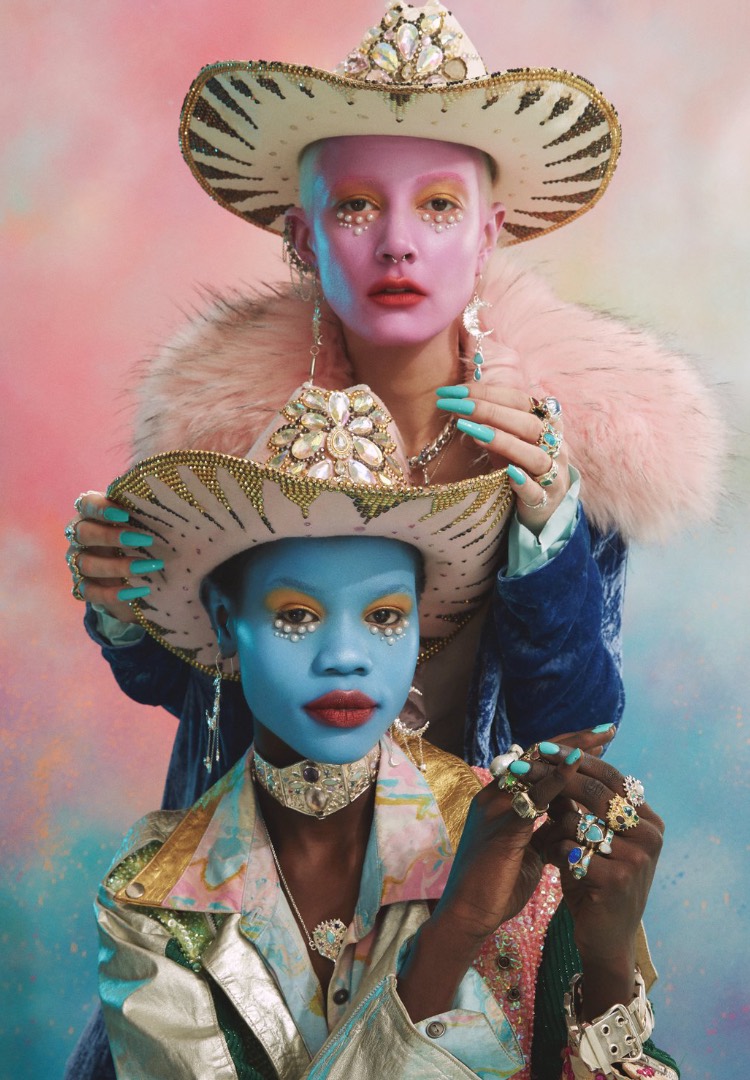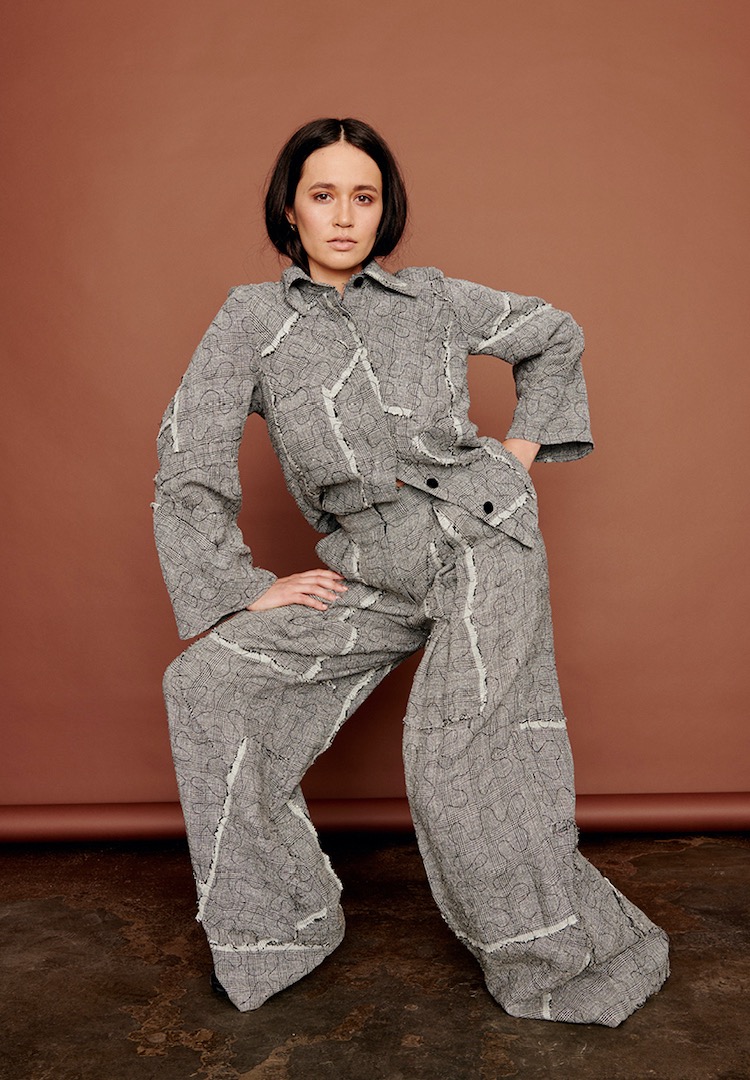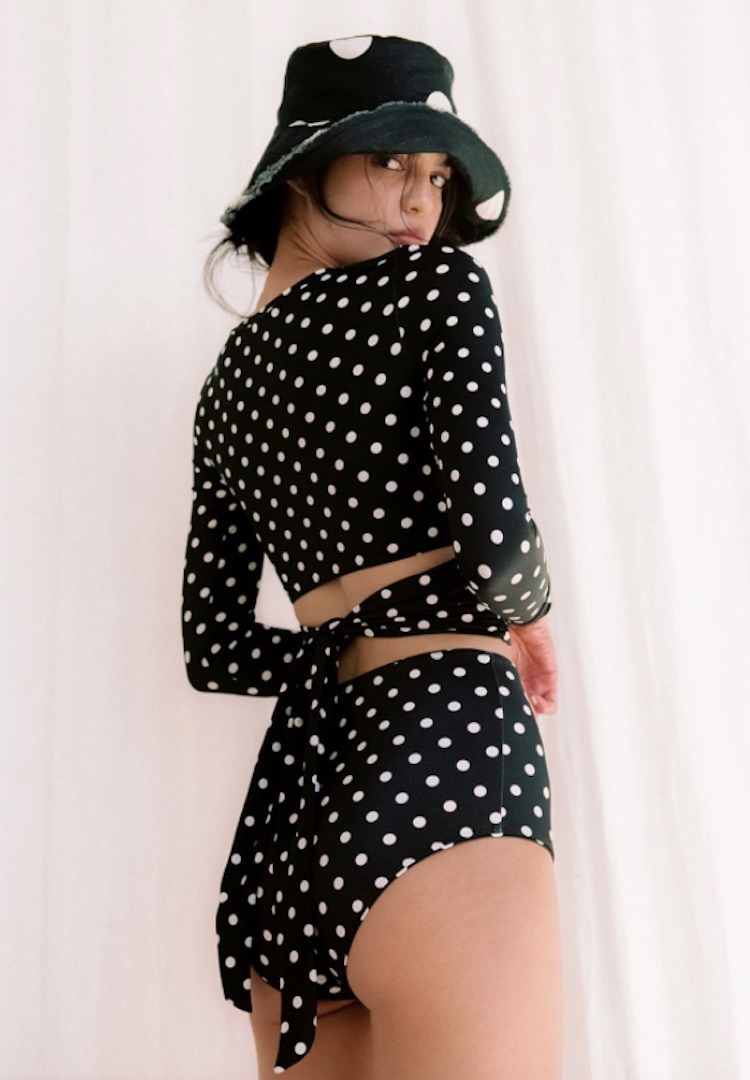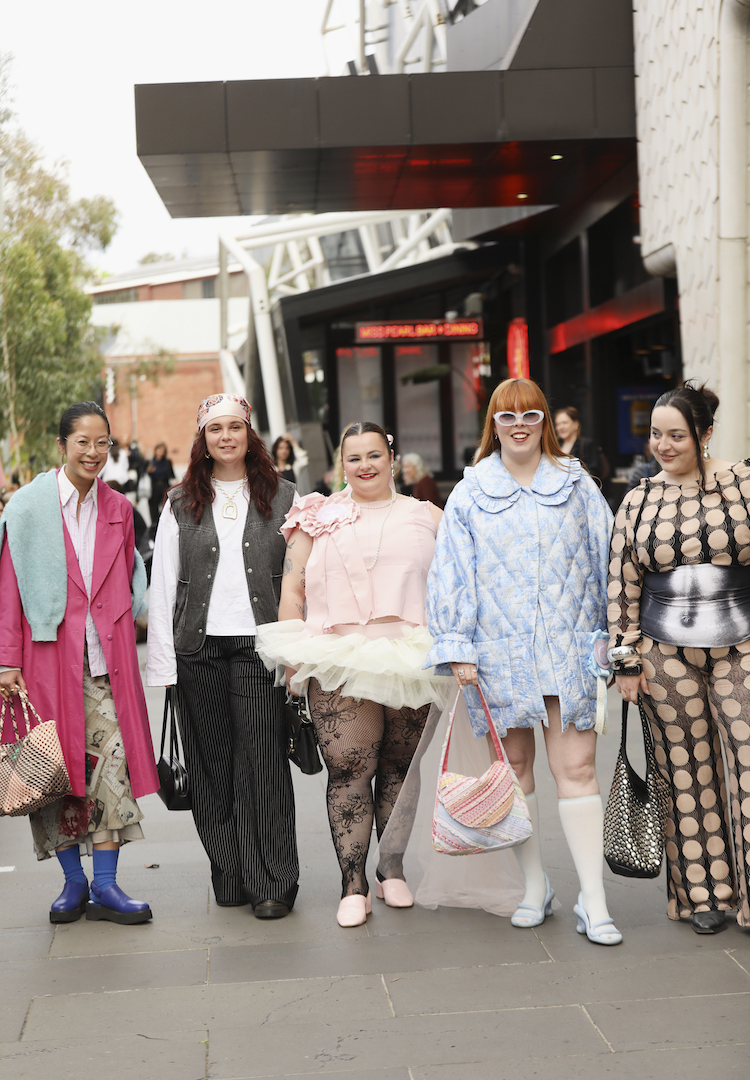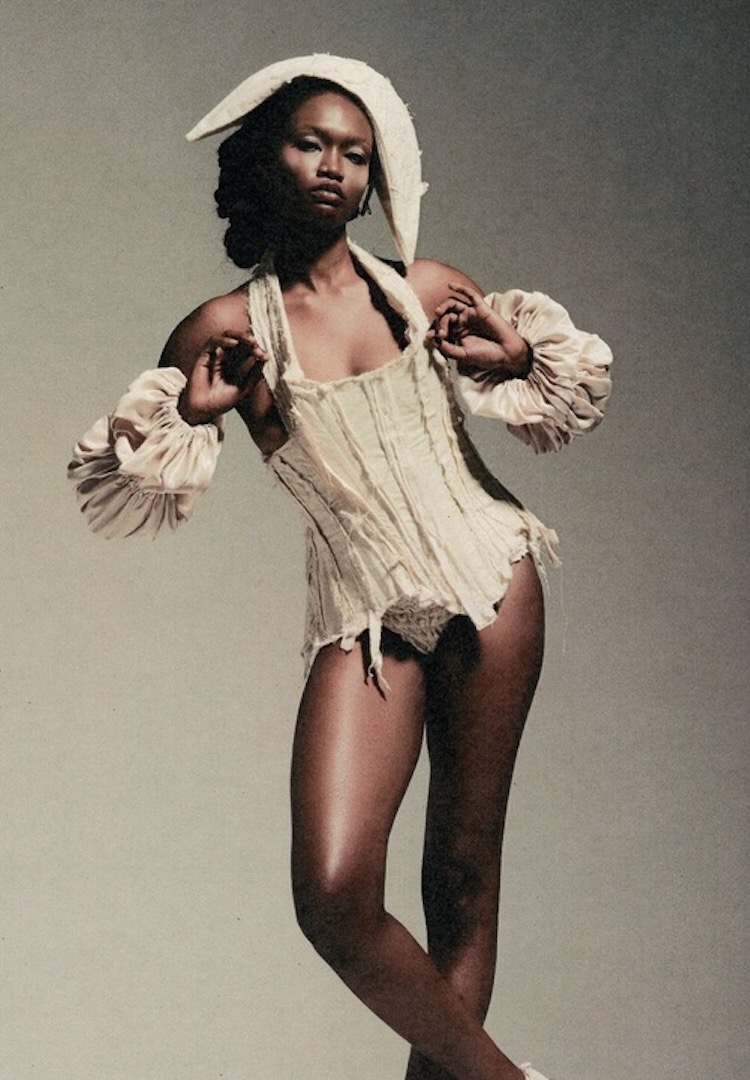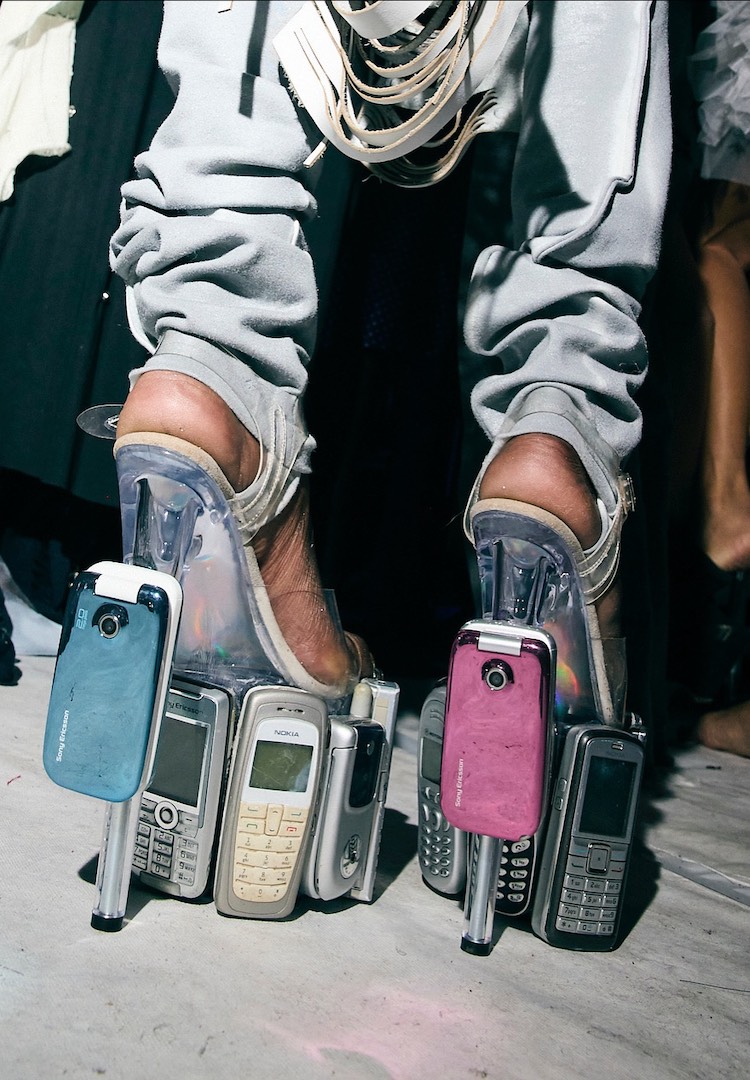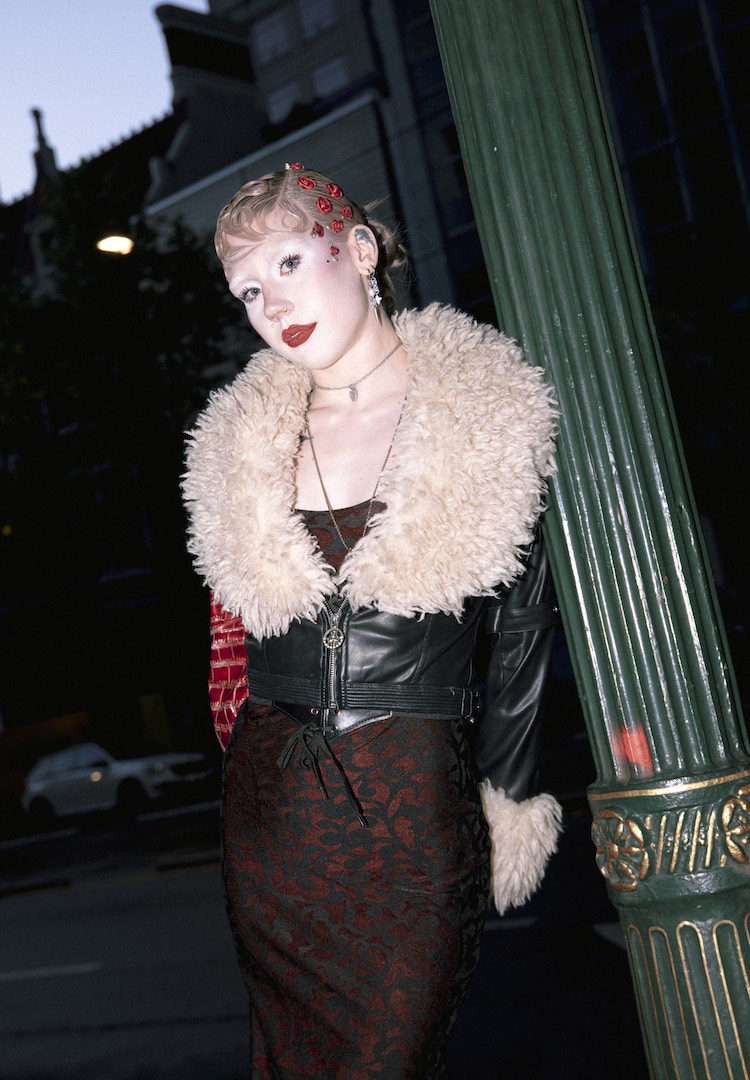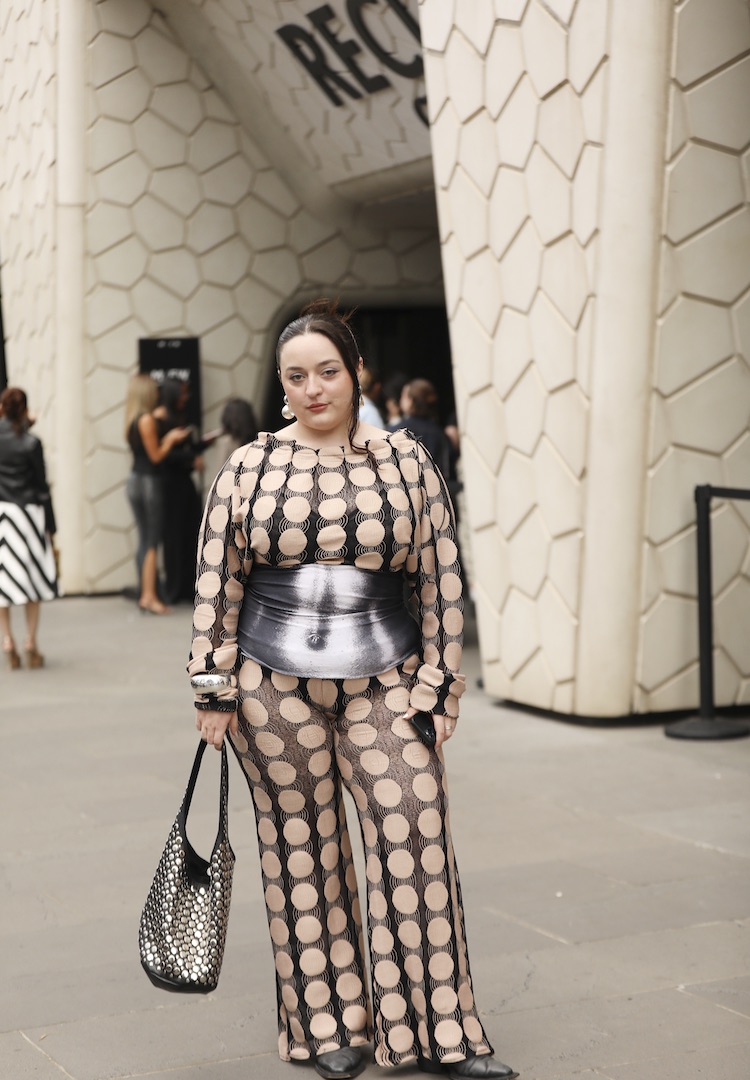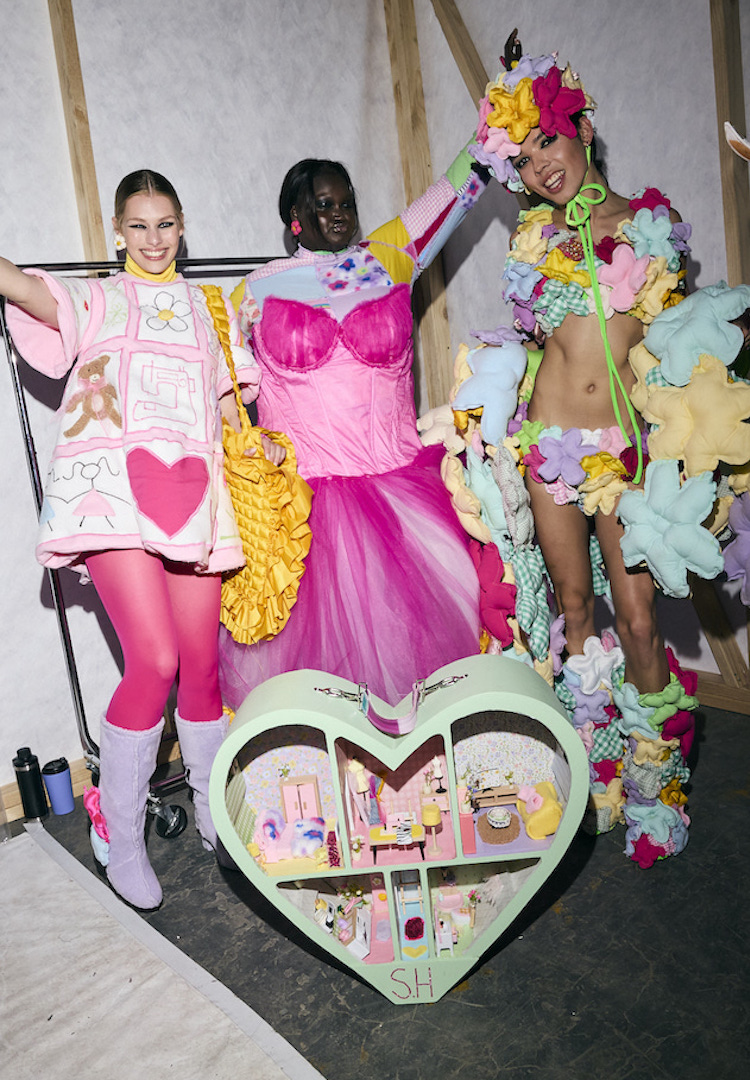Meet the student designers using upcycled design to create a sustainable fashion future
IMAGES BY JESS BROHIER
WORDS BY ELEANOR WILSON
“I wouldn’t dream of creating something that’s not sustainable now.”
“There are 7 billion people on the planet, but we produce 150 billion garments every year. So as long as there’s an oversupply of garments, I feel like I’m always going to have enough resources to keep upcycling.”
Meeting over an unstable, covid-induced Zoom call, emerging fashion designer and 2020 Melbourne Fashion Week Student Runway finalist Luisa Marrollo casually adjusts the neckline of her lilac, printed blouse.
“My grandmother gave this to me back in high school, and now I wear it all the time. I avoid buying brand new garments altogether. With what I know [about the garment industry] now, it just feels like I’m doing something wrong”.
As the fashion sector lingers as the second most polluting industry in the world, Luisa is one of a growing circle of young Australian designers forging new ground in the environmentally-conscious fashion movement.
Presenting entirely upcycled collections in last year’s Melbourne Fashion Week Student Runway, Luisa and two of her fellow student designers – Kristy O’Loughlin and Georgina Pola – spoke to FJ about their commitment to creating a sustainable future for fashion design.
Luisa Marrollo: Lipari
View this post on Instagram
Luisa’s graduate collection, titled Lipari, is both a conceptual and physical ode to the small Italian island of the same name. Showcasing ’80s-inspired puffed sleeves and frilled, Renaissance-esque silhouettes, the young designer sourced repurposed bed sheets, pillowcases and table runners for her collection – all made and embellished by young women at a local Lipari orphanage.
“There is a lot of emotion connected to the collection, it’s very personal to me and my heritage. My partner’s family are from Lipari and they’ve had the fabric in their family for generations,” she explains. “The main, green-coloured fabric that I used throughout the collection was end-of-roll; it was an old furnishing fabric. The aqua hue is actually a reflection of the colour of the water around Lipari at certain times of the year.”
While a year of pandemic stress and a seemingly perpetual lockdown challenged many, 2020 prompted Luisa to delve further into her own home for material inspiration. “Some of the lining in the jacket I produced was actually silk that my mum just had in her cupboard for 20 years. And I didn’t have any embroidery thread, but I had rope. So I just untwisted all of this rope and ended up using it as my sewing thread,” she shares.
Devoted to contributing to a circular future for fashion, the 24-year-old considers it her duty to remain alert to the environmental shortcomings of the garment industry. “As I learn more about some facts and figures in the industry, I think that’s when it becomes really alarming, and it really affects me. I wouldn’t dream of creating something that’s not sustainable now.”
Luisa has since graduated from her fashion design degree and is in the process of creating her own upcycled brand, By Alu, with fellow graduate Ali Hawli.
“With By Alu, we want to change the perception that sustainable clothing only consists of plain or basic garments. We want to create a brand that offers unique, made-to-order pieces that aren’t like anything on the market at the moment,” Luisa explains.
By Alu’s debut collection, Useless will launch in March this year.
Kristy O’Loughlin: [Not] Zero Waste
View this post on Instagram
With a somewhat paradoxical title for an entirely upcycled collection, Kristy O’Loughlin warmly affirms [Not] Zero Waste is all about ‘doing your bit’. “I just wanted to pick up on the fact that, even if I am creating a collection that is upcycled waste, nothing in the industry is ever zero waste,” she shares.
The 22-year-old fashion design honours student, whose collection features a melange of quilted, knitted and woven waste pieces, explains her aim is to create a shift in consumer attitudes to sustainable fashion.
“Through this collection, I wanted to restore the value to waste, predominantly by elevating it. I really took the position that if I elevated it, and showed that it was waste, that it could maybe change people’s minds about what waste could be, rather than masking it and making it seem brand new,” Kristy says. “I kept the selvedge, kept the rough edges and printed the end-of-roll fabric label on a couple of the pieces, to signify the origins of the waste. But I also tried to blend that with high quality finishes so that it wasn’t too rough.”
As for the materials themselves, Kristy has utilised her industry connections and turned to fellow Australian sustainable label Arnsdorf to acquire textile waste for her graduate creations. “I did an internship with Arnsdorf last year, so I knew they stored and collected all of their waste. I got back in contact with them and asked if i could use some of their waste for my graduate collection and they said ‘of course’. It took off from there.
“I also got a donation from a curtain and blind business. They gave me their end-of-roll when they didn’t have enough material to make anything more with it, so I used that for toiling and trialling as well.”
Hoping to one day expand into a career in fashion systems and sustainable innovation, Kristy’s dedication to sustainability extends beyond garment upcycling. In 2019, she was part of a team who pioneered the creation of Enzer, a washing machine filtration system which uses enzymes to breakdown microplastics. The team received the Textile Processes Prize at the Biodesign Challenge Summit in New York in recognition of their biodesign efforts.
Georgina Pola: Third Life
View this post on Instagram
Created from dumpster diving in sailing shop bins to dissecting Marxist theory, Georgina Pola’s cyber-punk inspired Master’s collection Third Life is a culmination of creative innovation and circular passion.
“I started thinking about [upcycling] last year, when I was making my own clothes. I thought about how many stockpiles of clothes there are around the world that are just sitting around, yet could be used in so many different ways,” she says.
Completing her circular collection with additional materials from personal excess stock, op shops and commercial donations, Georgina’s most bold upcycling moment came in a sailing shop car park. “I went to a sailing shop and I went through their trash, because they had this amazing cobalt blue, durable and waterproof fabric. They would’ve just thrown it in the bin but I fished it out to repurpose,” she laughs.
The Master’s graduate employs a wide range of influences for her work, from the futuristic-grunge aesthetic of sci-fi series Westworld, to the classical works of German philosopher, Karl Marx.
“The way [Marx] describes how the connection between the worker and the output can be lost in mass production, is something I thought about a lot,” she explains. “Especially when you’re working slowly with your hands, you sort of bring that connection back to your work, through slow and creative processes. I think that brings more value to the garments as well”.
When it comes to her attitude to environmentally ethical design, Georgina shares similar sentiments with her design peers. “I think moving forward, sustainability has to be the key focus in anyone’s brand. There are enough clothes in the world that don’t have anything purposeful behind them. So slow fashion will certainly continue to be at the very core of my practice.”

